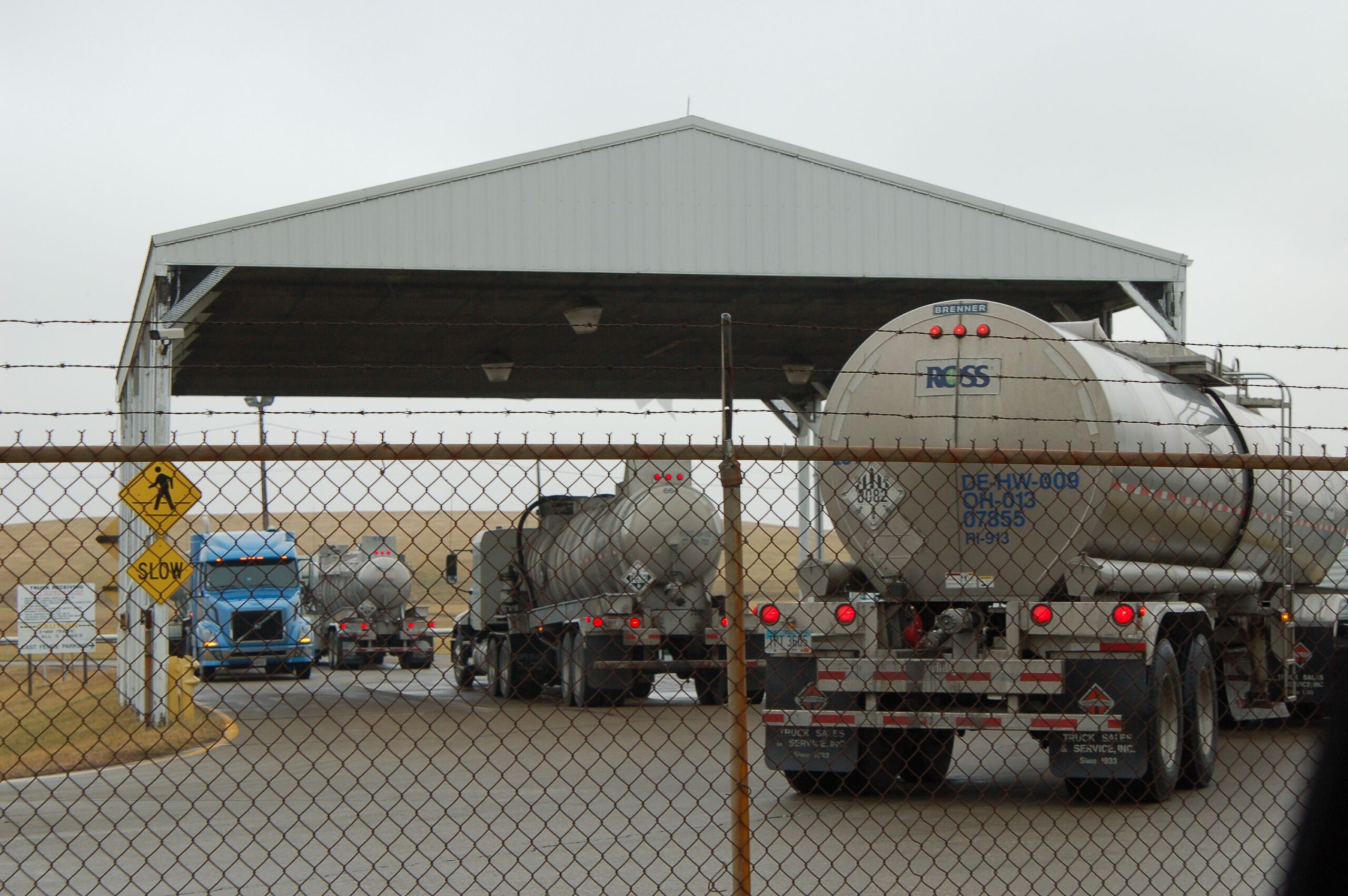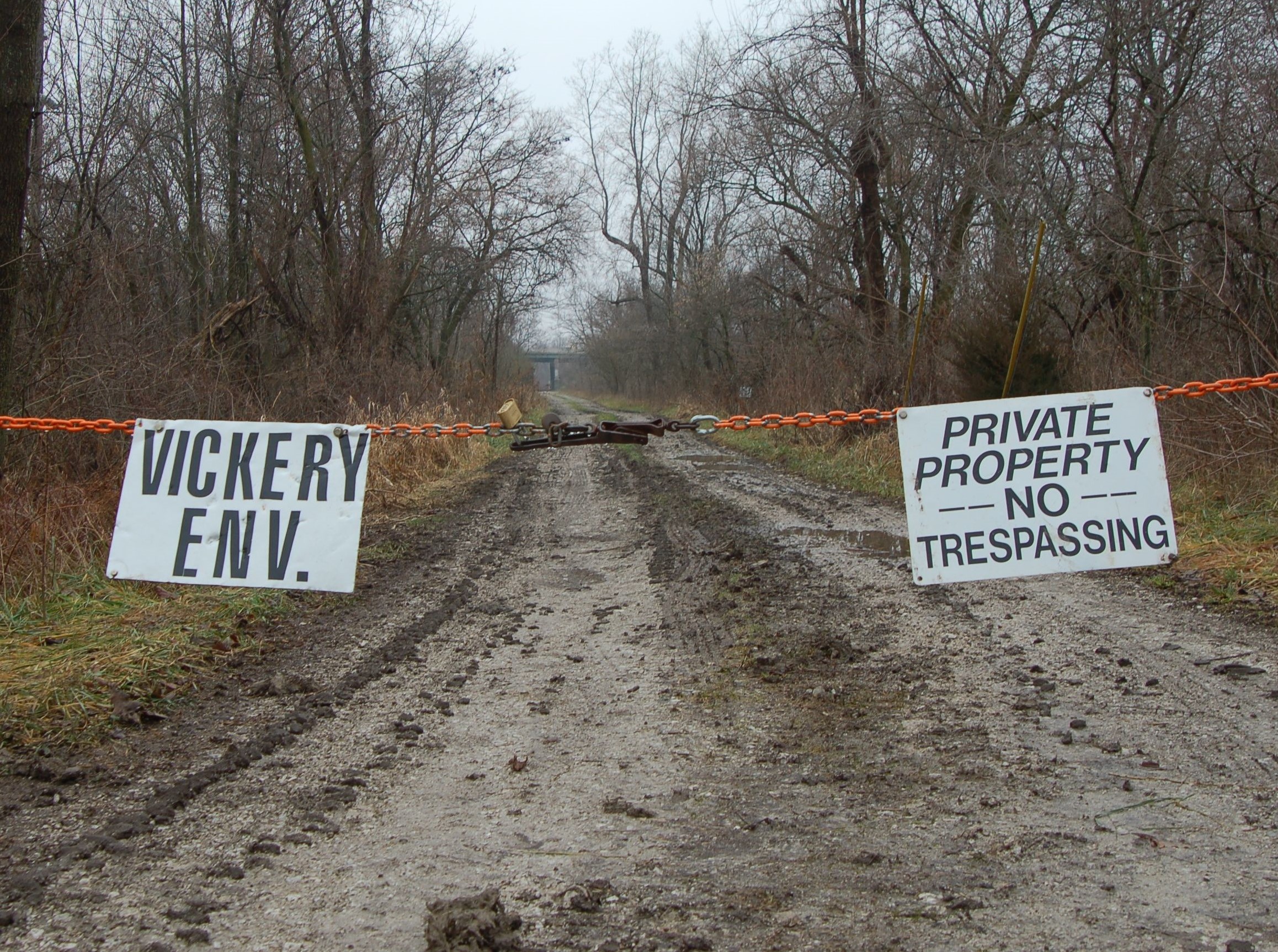
Some residents in Vickery, including Ohio State Rep. Gary Click, were upset to learn that hazardous wastewater from a Feb. 3 Norfolk Southern derailment was being sent to their area for disposal. But the reality is that Vickery Environmental (VE), a Class 1 deep well injection site about five miles from Sandusky Bay, has been receiving and disposing liquid waste for nearly a half century.
The derailment in East Palestine, Ohio included 38 cars, 11 of which contained 300,000-plus gallons of chemicals including benzene, vinyl chloride and isobutylene.
After a multi-day fire, including a controlled burn of toxic payloads, clean-up efforts began. According to Ohio Gov. Mike DeWine’s office, by April 10 about 11.4 million gallons of liquid wastewater had been hauled from the site. Destinations also include Class 1 sites Texas Molecular in Deer Park, Texas and Detroit Industrial Well in Romulus, Michigan.
While there are more than 750,000 injection wells in the US in six classes, just 137 Class 1 wells are permitted to inject hazardous waste, according to the US Environmental Protection Agency. (USEPA) Most of these are located where manufacturers, such as steel plants, inject waste generated on-site.
Just a handful of Class 1 hazardous wells in the nation import materials for injection and VE is one of them. It currently operates four wells. Three others were plugged and abandoned in 1986 and 1987. A fifth was drilled recently but is not yet permitted to operate. Since 1976, the site has been the destination for more than 300 varieties of liquid waste from dozens of states and Canada.
How deeply is waste stored?
Deep geologic formations like the Mt. Simon sandstone can spread over thousands of square miles and hold toxic chemicals far below the lowermost groundwater sources. At VE, the waste is injected 2,900 feet beneath the surface – 1,600 feet below the lowest source of drinking water. Some of the stone deep below the site is 560 million years old.
“We’re putting [waste] into a formation that’s been there for millions of years,” says VE’s former manager, Steve Lonneman. “We’re taking bad stuff from up here that’s toxic and putting it down there.”
The site receives about 22 trucks a day, each with a load of about 4,200 gallons. By mid-2014, Ohio EPA records indicate VE had injected 1.66 billion gallons of waste – enough liquid to fill about 3,389 Olympic-sized swimming pools. Total cumulative gallons are now likely more than two billion.

Vickery Environmental is permitted to store more than 1 million gallons of hazardous waste in above ground tanks before injection. (Photo Credit: James Proffitt)
How safe is it?
According to Enesta Jones, USEPA media relations, serious incidents are rare.
“Since the federal Underground Injection Control program was established in 1980 there have been only minor incidents related to the actual injection at Class 1 sites, such as the loss of a well’s mechanical integrity, without the release of fluids to deep groundwater,” she says.
Liquid waste is pushed into tiny gaps between grains of sand in the sandstone, and in theory, it should stay there for a long time. USEPA mathematical modeling says “with a reasonable degree of certainty” no material at the Vickery site should migrate more than five miles outward from the injection site in 10,000 years, and none vertically.
The injection well itself is comprised of a series of five cement and steel casings surrounding a 2 7/8-inch fiberglass tube. The injection tube is surrounded by a petroleum solution.
“The solution is pressurized 50 pounds more than the waste pump,” says Lonneman. “A computer system shuts it down if the pressure changes because that could be a leak.”
According to Lonneman, the wells penetrate through many layers of stone which protects the hazardous waste from contaminating groundwater. “We’re not allowed to put too much pressure on it,” he says. “We’re not allowed to fracture the rock, so the flow stays steady as the stream is pushed into the sandstone.”
VE also samples and tests all waste to ensure it doesn’t react negatively with other waste stored in the sandstone. “We usually have two or three loads a month that get rejected. We tell customers ‘If we’re your Plan A, you need a Plan B,’” says Lonneman.
While the underground component appears safe, on the surface there’s still plenty of room for error. VE is permitted to store more than one million gallons of liquid waste in 17 above-ground tanks before injection.
In 2017, the company completed a three decade clean-up ordered by the USEPA to remedy above-ground violations, including soil contaminated with benzo(a)pyrene near one of its emergency drain tanks and a section of above-ground transfer piping. In 1985, Waste Management, Inc., VE’s owner, was fined a total of $12.5 million in separate settlements with the USEPA and Ohio EPA over two lagoons illegally storing 120 million gallons of toxic waste. The lagoons were subsequently closed.

Vickery Environmental is located on more than 500 acres in Sandusky County Ohio. Most of it is either wooded or open fields. (Photo Credit: James Proffitt)
What about earthquakes?
Deep well injection has been proven to cause earthquakes. In fact, injection of fracking wastewater fluids was to blame in an Oklahoma earthquake in 2011 and a series of more than 150 tremors in Texas in 2008 and 2009. In nearby Youngstown, Ohio, 100 miles east of Vickery, more than 100 earthquakes registering up to magnitude 3.9 have been linked to an injection well disposing of wastewater deep underground.
But VE managers say the location of the Vickery wells is earthquake-safe, pointing out there are no known faults in the area. Justin Rubinstein, a research geologist with the U.S. Geological Survey, agrees. Despite VE’s high volume injections under moderate pressure, he says its operation appears time-tested.
“It’s been operating 40, 50 years, a million barrels a year, so it’s a significant well,” he says. “The fact you haven’t seen earthquakes there during the past 50 years does bode well that the likelihood of earthquakes is pretty low.”
Who creates hazardous materials?
The short answer is, virtually every industry creates some form of hazardous waste. Major sources in the U.S. include food processors, petroleum and gas producers, chemicals and plastics manufacturers and paper and wood products operations. GLN contacted industry trade groups but only one, The Food Industry Association, responded, declining to discuss hazardous waste.
According to the 2005 US Census, the last year the government tracked this information, the top five industries spent more than $3 billion combined for hazardous waste disposal, with all industries combined paying about $4.56 billion.

A truck carrying a load of what’s labeled nickel oxide enters Vickery Environmental. (Photo Credit: James Proffitt)
If not geologic sequestration, then what?
While it may seem wrong to pump millions of gallons of hazardous chemicals deep into the earth each month, without sites to dispose of such waste, the alternative is indiscriminate dumping. New York’s Love Canal disaster is one of the most famous hazardous waste stories. In that case, in the 1940s and 1950s The Hooker Electrochemical Company simply buried 21,000 tons of hazardous waste in drums.
But even with sanctioned sites for disposal, rising costs could be bad for the environment, warns Hilary Sigman, an economics professor at Rutgers University.
“Research documents that increasing the costs of legal waste management does encourage substitution of illegal dumping,” she says. “There’s also an active international trade in hazardous waste. So you do have to trade off the benefits of any increased stringency in management requirements against the costs of these sort of responses.”
Catch more news at Great Lakes Now:
Environmental justice expert questions Michigan’s subsidies for electric vehicles
Ohio residents fight to get radioactive oil and gas waste off their roads
Featured image: Trucks carrying hazardous waste entering Vickery Environmental. (Photo Credit: James Proffitt)




